Despite being on the typical tourist trail linking Oaxaca and the Yucatan, it’s held onto its charms extremely well, possessing a kind of magic that few places can compete with.
Full of culture, history, music, beautiful architecture, and excellent food, San Cristóbal is a must if you’re travelling through these parts.
Based on extensive time spent in San Cristóbal (across two trips), let me truly share everything to make the most out of your stay!
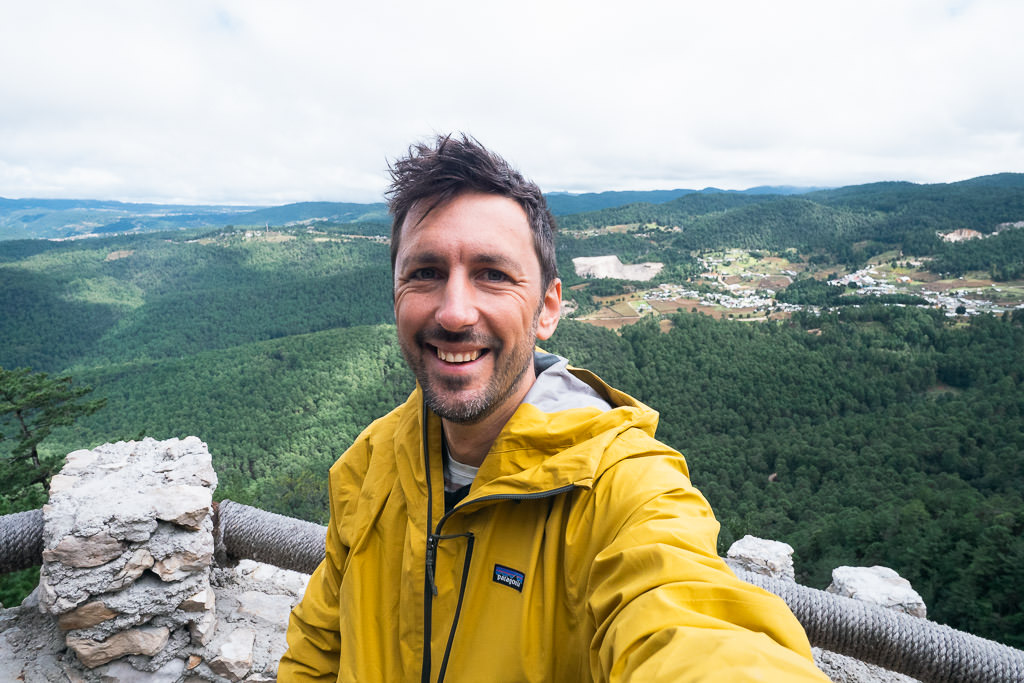
San Cristóbal de las Casas essentials
- How many days: I recommend staying at least 3 nights if you can!
- Activities: The two absolute must-see excursions are Sumidero Canyon and San Juan Chamula. It’s worth pre-booking your tours. You can check tours on Viator or at GetYourGuide. Other things you can easily do on your own schedule.
- Hotels: I recommend a stay in Casa Santa Lucia ($$$) or Hostel Boutique 55 ($$). There are also many (very cheap) backpacker hostels if you’re on a tight budget.
What to expect
San Cristóbal de las Casas is a charming mountain town with narrow streets lined with colorful low-rise colonial buildings.
Many travellers rate it as their favorite place in Chiapas, but let me give you a picture of what it’s like, as it’s quite different from many other places in Mexico.
The first thing to know is that San Cristóbal is a big melting pot, both in a traditional and modern sense.
Chiapas is one of the states in Mexico with the highest percentage of indigenous people, which you will easily notice in San Cristóbal. People of various languages, religions, and dress styles — some descendants of the Maya — can be seen mixing in the cozy squares and lively markets.
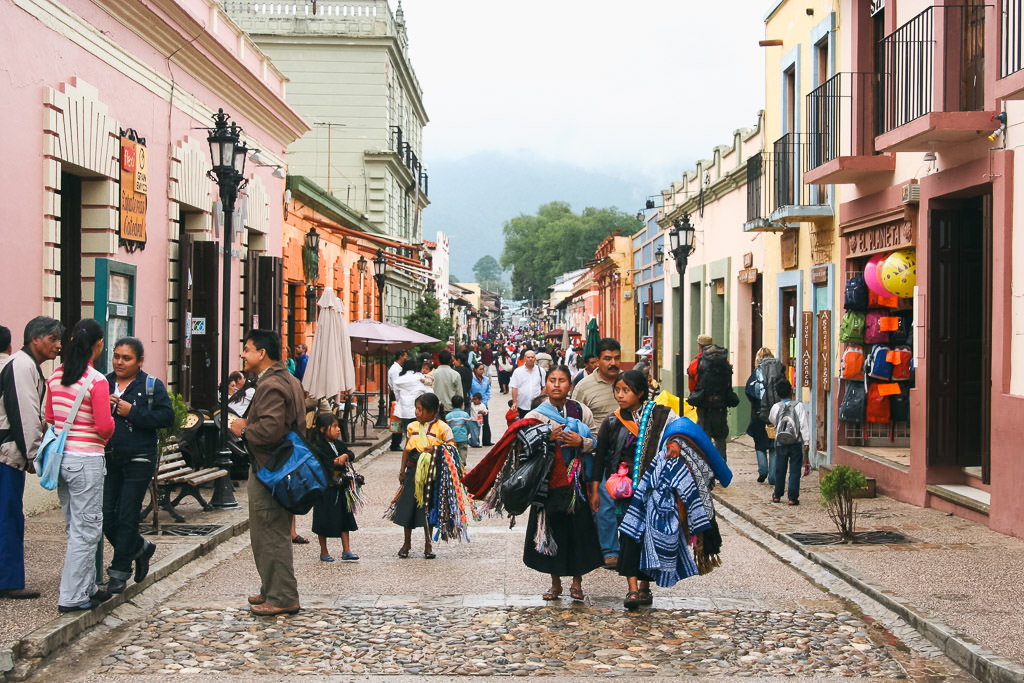
The town has also lured many international immigrants, including many who are taken with its alternative and artistic scene or who sympathize with the leftist rebel indigenous movement called the Zapatistas. This in part has helped to give the town a real soul with many creative events, street art, as well as restaurants with foreign cuisines.
More recently, quite a number of digital nomads and remote workers have moved in, many of them referring to the town by the shorthand ‘San Cris’.
All this makes it quite a contradictory place. It is both deeply traditional and surprisingly trendy and international. It oozes authenticity while also being wonderfully tourist-friendly.
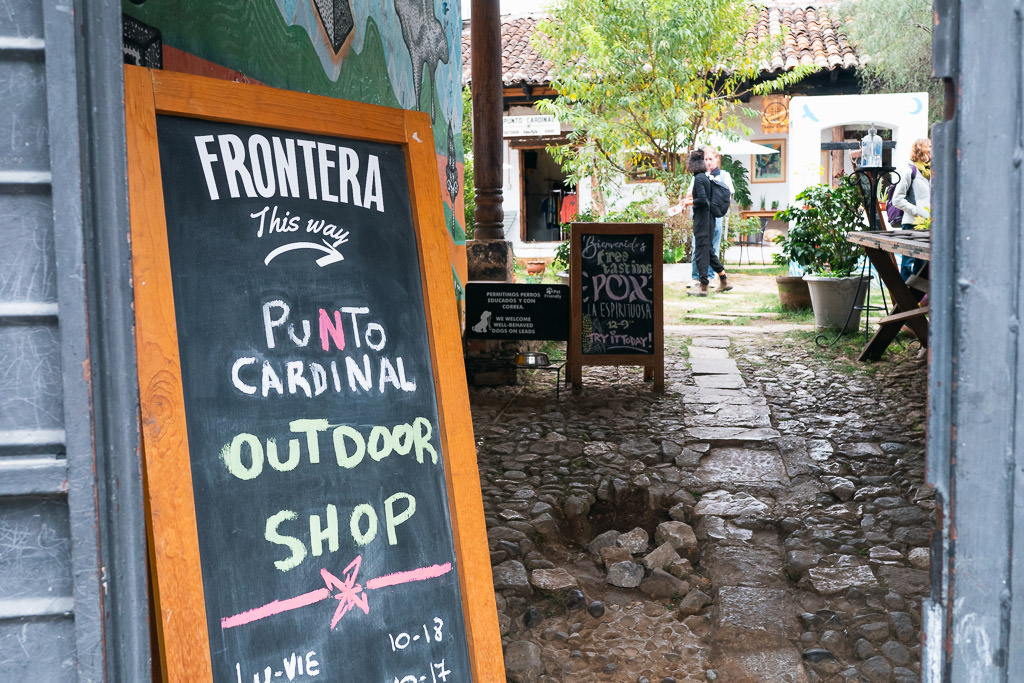
Keep in mind that Chiapas is the poorest state in Mexico, so you may sometimes see beggars and others less fortunate. The flip side of the local economy and level of development is that prices of food and accommodation are very affordable for foreign tourists.
It’s also useful to know that the weather can be very changeable in San Cristóbal. Being surrounded by mountains at an elevation of 2,200m or 7,200ft, you can experience sunshine, clouds, and rain on the same day. At night it can get a bit chilly, so bring some layers.
San Cristóbal makes for a perfect base for excursions and has plenty of things to see in town as well, such as small museums, churches, and markets. You can check out various local and indigenous crafts like jade and amber jewelry and traditional garments. Coffee and chocolate are also cultivated in the region.
The 3 best tours
Not all tours are equally worth it! Some of the tours in San Cristóbal are not really top priority or can be more easily done on your own.
After doing nearly everything there is to do in San Cristóbal, I highly recommend the following three tours. I’ll rank them here in order of wow-factor and the overall need to use a tour.
1. Sumidero Canyon
If you do just ONE thing in San Cris, make sure it’s this!
By far one of the most stunning natural sceneries you can see in all of Southern Mexico, Sumidero Canyon features giant cliffs over 1000 feet (300 meter) tall that tower above the river and surrounding jungle below.
The area is also home to lots of wildlife, and when heading along the river you can spot everything from Caiman and Spider Monkeys to various tropical birds flying overhead.

The only way to truly experience it is by boat tour, so even the most staunchly do-it-yourself-style traveller will need to join an organized group for this one.
Not only will you have hotel pick-up and drop-off from your accommodation, but you’ll also have the boat ride included. Even better is that you’ll have a knowledgeable local guide on hand who can teach you some very interesting things along the way.
Not all tours go on all days, so it’s worth pre-booking. I suggest booking this day tour from San Cristóbal. Similar tours can also be booked at Viator.
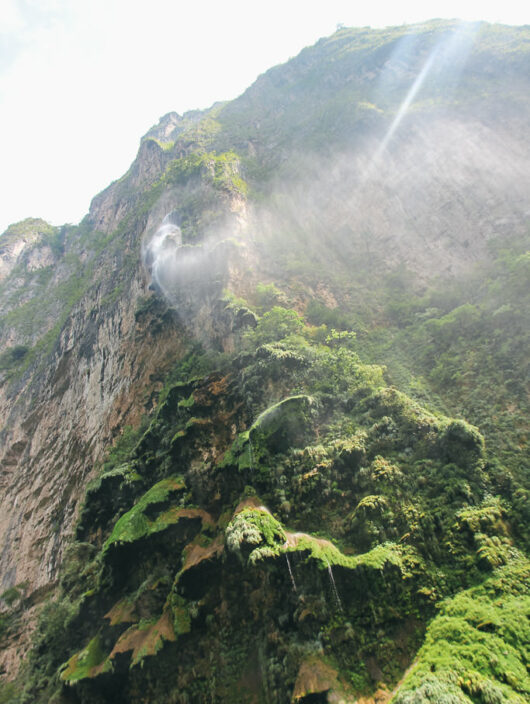
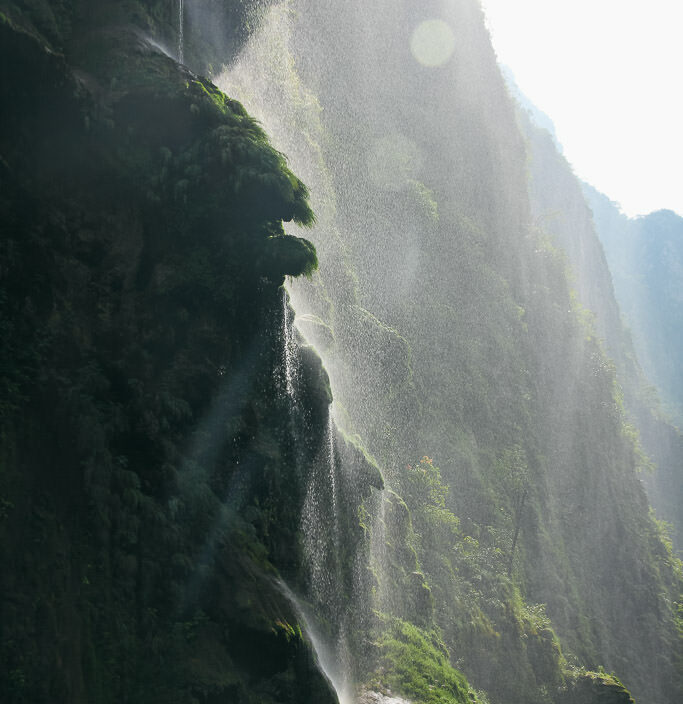
2. San Juan Chamula
Many travellers rate this as their most unique experience in Mexico. Visit at the right time and it may just be one of those wild stories you’ll be telling everyone back home!
This small Tzotzil community near San Cris mixes Catholicism with native beliefs in unique and fascinating ways. Inside its small church, you can regularly witness profound rituals that may involve chanting, loud burping, or even animal sacrifice. (If you see someone carrying in a chicken, you’ll know what time it is…)
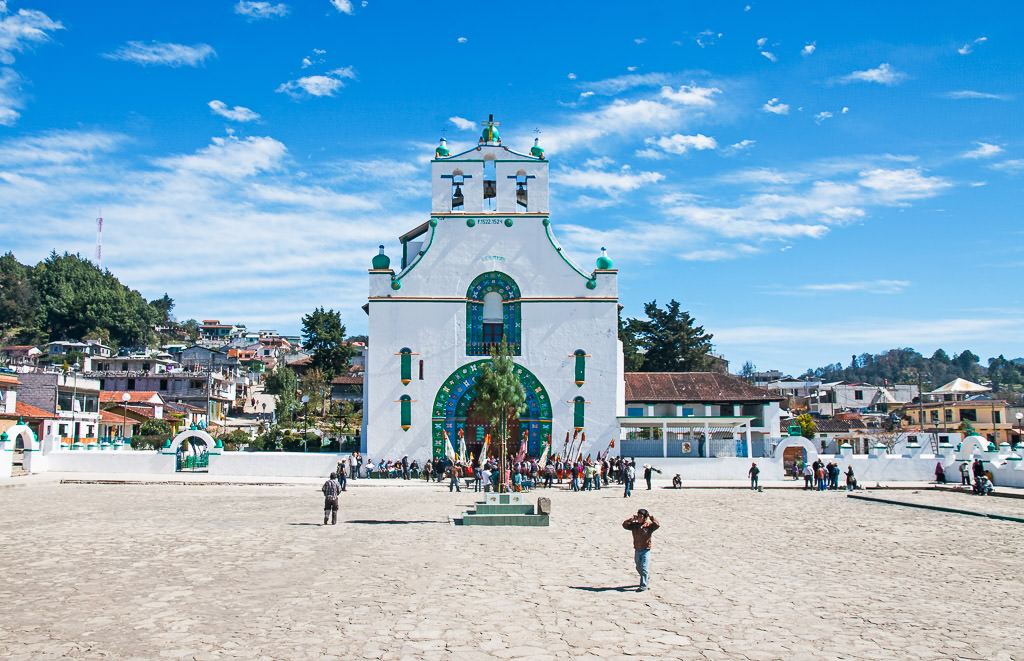
You’re allowed to watch as long as you respect the one cardinal rule: inside the village and especially inside the church there are strictly no photos allowed. Any disrespect of this rule can lead to a 40,000 MXN fine — and they do actually enforce this. (The above image is a stock photo.)
You can visit San Juan Chamula independently by taking a colectivo from Calle Honduras (see map location) and venturing into the church on your own. Going on a tour is still highly worth it as you’ll be guided by a local and, weirdly, you feel less like an intruder when someone is showing you around. You’ll also visit the indigenous community of Zinacantán on this tour.
3. El Chiflón waterfall
Finally, this is the best waterfall to visit from San Cristóbal. You can visit it on your own if you take a bus to Comitán (1 hour) and once there find a colectivo to the waterfall (another hour or so). It’s more efficient and potentially more fun to visit El Chiflón as an organized trip. As a bonus, you’ll also visit the Montebello Lakes National Park.
I recommend El Chiflón over Agua Azul as it’s a lot closer and doesn’t involve a tiring 4-hour journey through the mountains to reach. Comitán is also a nice town to visit along the way.
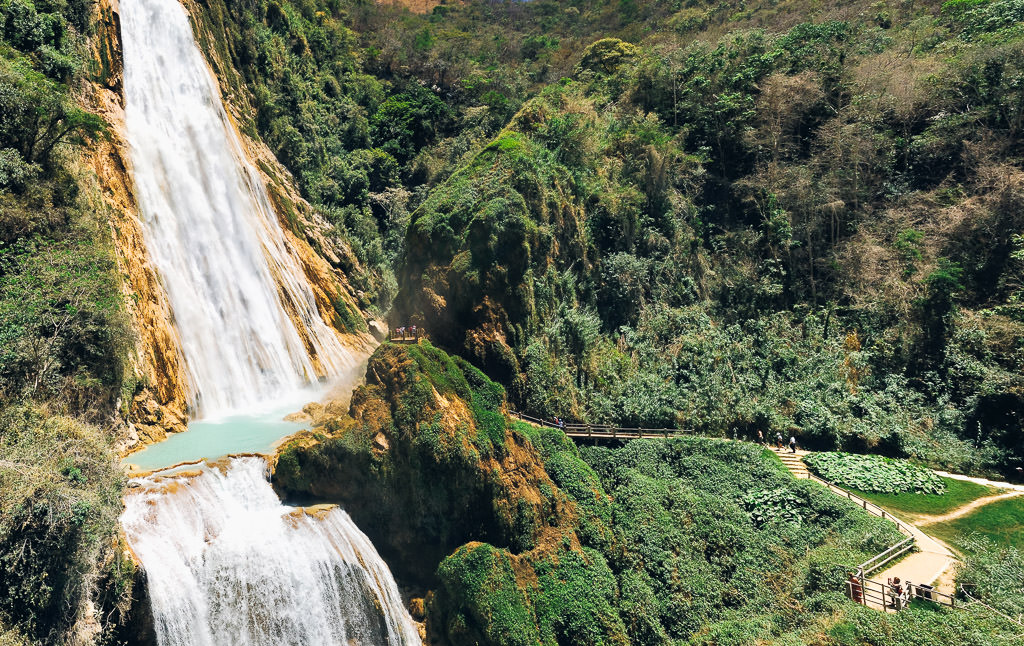
Are the Palenque tours worth it? Honestly, I do not recommend taking day trips from San Cristóbal to Palenque for its ruins or waterfalls. These sights are amazing, but you’ll have to get up at 4 am and won’t get back until around midnight. It’ll be a grueling day with up to 12 hours spent travelling in minivans. It’s better to skip it or to actually stay in Palenque for at least one night. You can check my travel guide to Palenque for more tips.
Day tours to the Palenque ruins, Agua Azul, Misol-Ha, the Roberto Barrios waterfalls, or the Lacondan jungles will honestly take very long if done from San Cristóbal. Consider doing these from Palenque instead!
Where to stay
San Cristobal has a wealth of accommodation options. Being such a famously budget-friendly place, I was surprised by how many boutique and upscale options are also available.
High-end
Sophisticated hotels like the Casa Santa Lucia, the Casa del Alma Hotel Boutique & Spa, and the Plaza Gallery Hotel Boutique will let you enjoy some luxury at lower-than-typical prices.
Budget-friendly
On my most recent visit, I stayed at Hostel Boutique 55. This is just the perfect mid-budget ‘flashpacker’ hostel, offering comfy rooms filled with many plants and arty decorations, and an awesome owner.
Backpacker
On the other hand, if you are a backpacker you can stay in San Cristobal for very little money. Several hostels offer dorm beds for as little as USD $7 per night. This includes the popular Rossco Backpackers, where I stayed a few years ago and loved the many nightly fireside chats I had with other travellers in the courtyard.
Things to do in San Cristóbal
Walking tour (do this first!)
Free walking tours can be hit-or-miss, but I loved this one in San Cris. I suggest doing this highly insightful tour the first thing when you arrive!
You’ll gain a useful introduction to the town’s founding, the indigenous communities, the local markets, and some of the important sights.
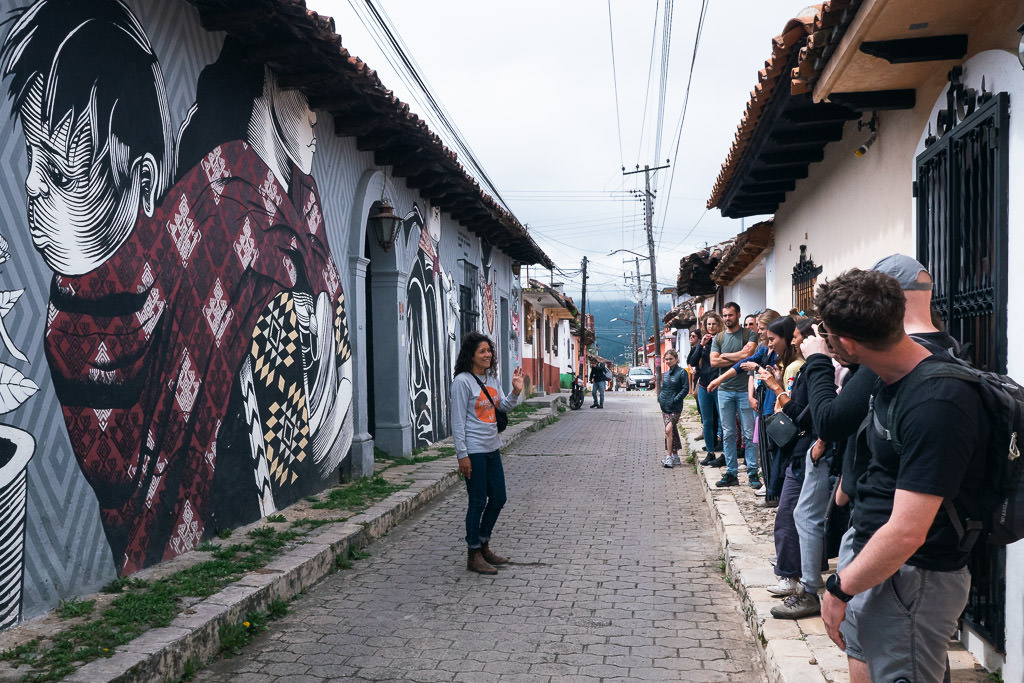
Groups leave from the main square every day at 10 am and 5 pm. It’s not exactly free but donation-based; the suggested donation is 150 pesos. The tour takes around 3 hours and ends with a free Pox tasting, a local corn-based brew.
Mercado Municipal
The Mercado Municipal is just a 10-minute walk north of the zócalo. It can be a good place to pick up some souvenirs, but exploring it is an adventurous experience in itself.
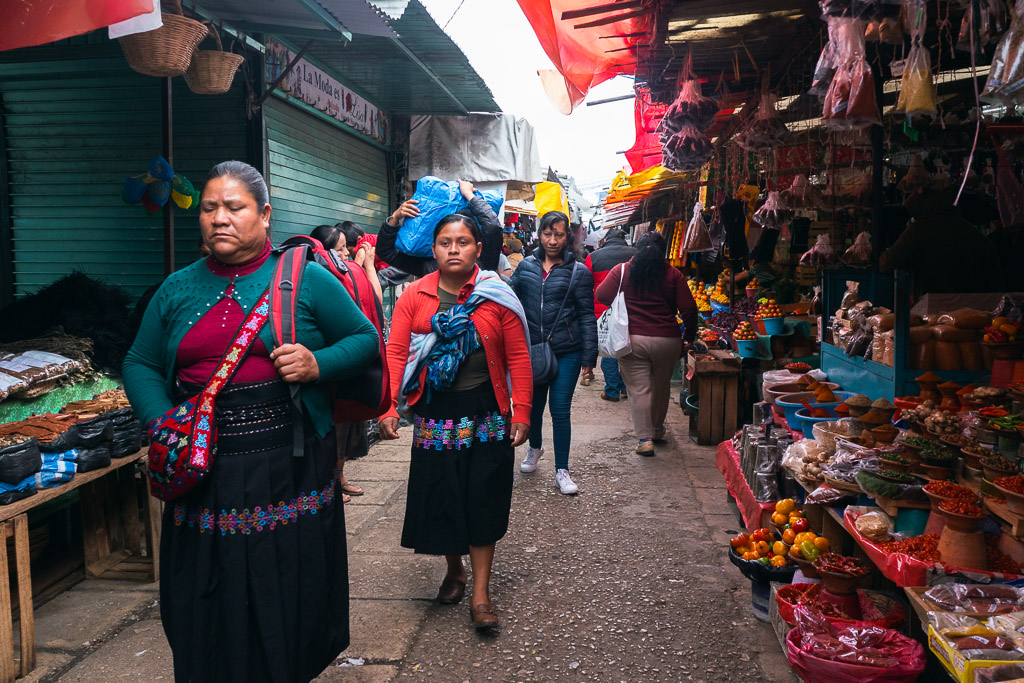
Not only can we find handicrafts here, but you can also browse local produce and eat at the various regional food stands. You may see live animals being bought and sold as well as curious types of food. Members of indigenous cultures wearing various styles of garments can be seen here as well.
While it can be an assault on the senses, heading to this market is a great way to get to know the local life.
Visit its beautiful churches
San Cristóbal is a classic example of a traditional, Mexican mountainous town, with a striking mix of indigenous roots and colonial influence. And when it comes to the latter, we can find all kinds of stunning architecture throughout the town, particularly its churches.
The easiest to spot is the Catedral de San Cristóbal de las Casas. It’s located in the heart of the zócalo (main square) and has a beautiful interior which is worth taking a look.
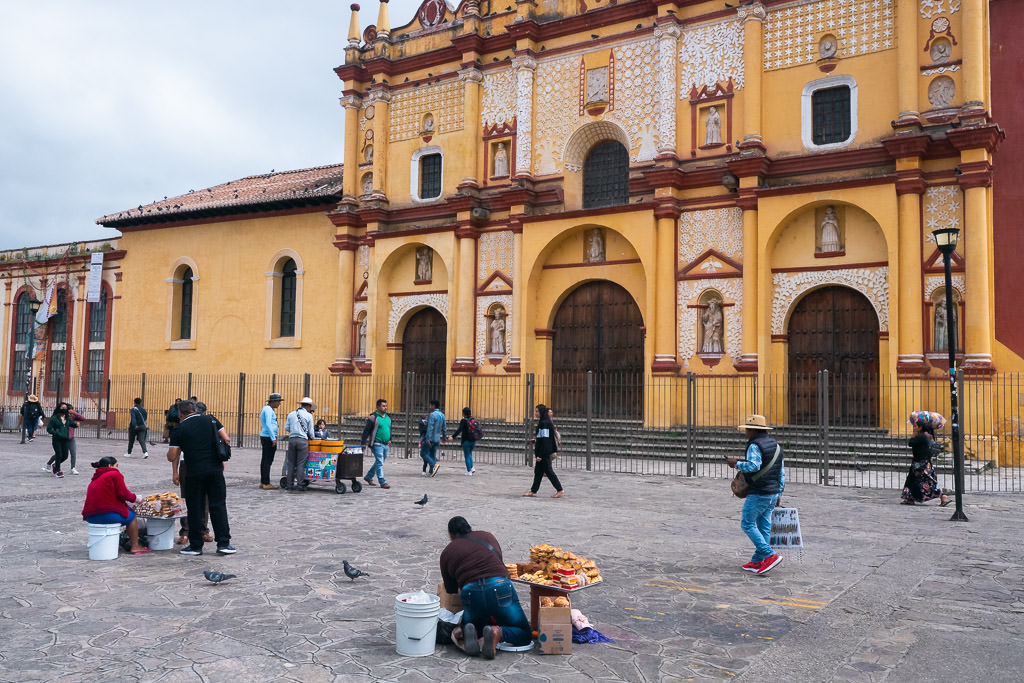
One of the most underrated churches has to be the Templo y Ex-Convento Del Carmen (location), which has a beautiful, bright-red facade. It’s located on the Calle Hermanos Dominguez and dates back to the early 17th Century.
But the most ornately decorated is surely the Templo de Santo Domingo de Guzmán, found near the main market (location). It took 200 years to construct and has been used by followers of Catholicism as well as indigenous beliefs. Its intricately detailed facade was under renovation during my latest visit, but it should be back on full display sometime in 2024.
Caves of Arcotete
After San Juan Chamula and Sumidero Canyon, I would rate this the next most worthwhile excursion outside of town.
By far one of the most underrated sites you can visit within San Cristóbal, the Arcotete Caves still go under the radar of most travelers.
Inside the park, we can find giant limestone caves (which can be rappelled), forested hiking paths with footbridges, and even zip lines.
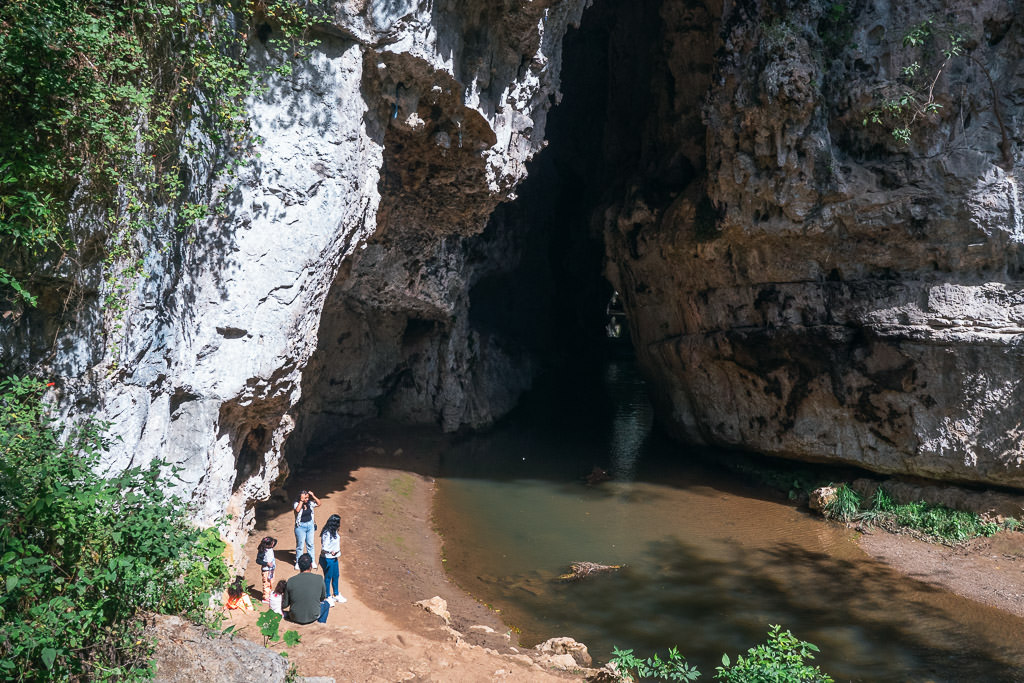
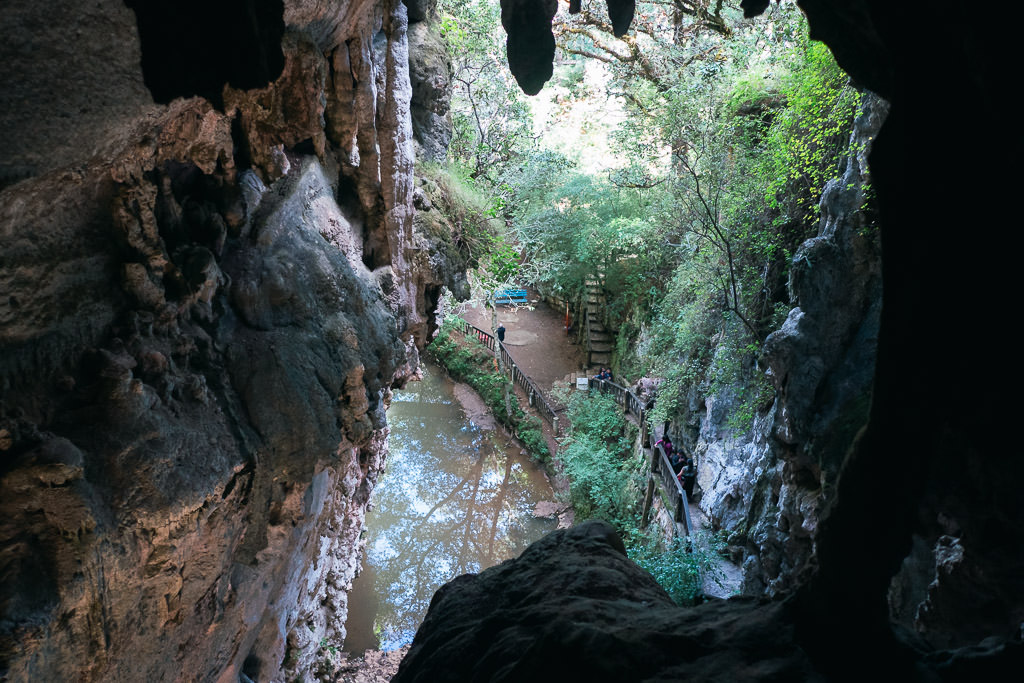
The most impressive sight is the El Arcotete archway, which stands at over 40 meters in height and is covered in crystallized stalactites and stalagmites. You can view it at river level or clamber your way via another path to a balcony-like area near the cave’s ceiling.
Also on-site we can find many cute, shaded picnic areas, and also a couple of restaurants on-site. It takes about 20 minutes to reach by colectivo (which regularly depart from this location).
Explore by motorbike
The best way to explore the countryside around San Cristóbal is with your own transportation. I loved the opportunity to visit several wonderful nature parks with caves and drive through scenic rural communities with brightly colored churches.
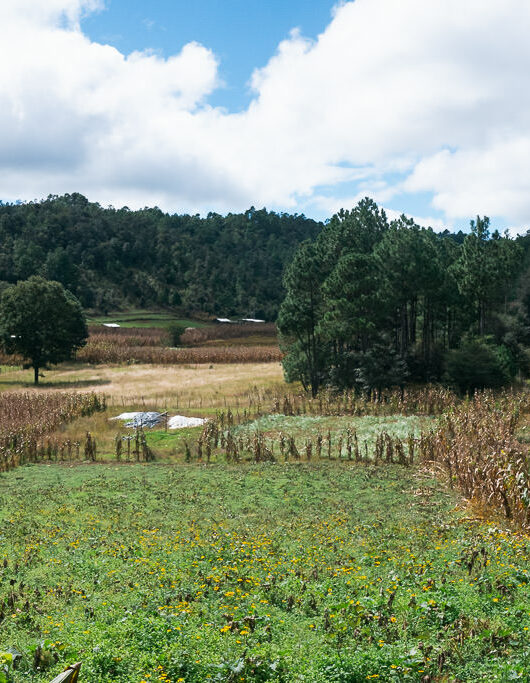
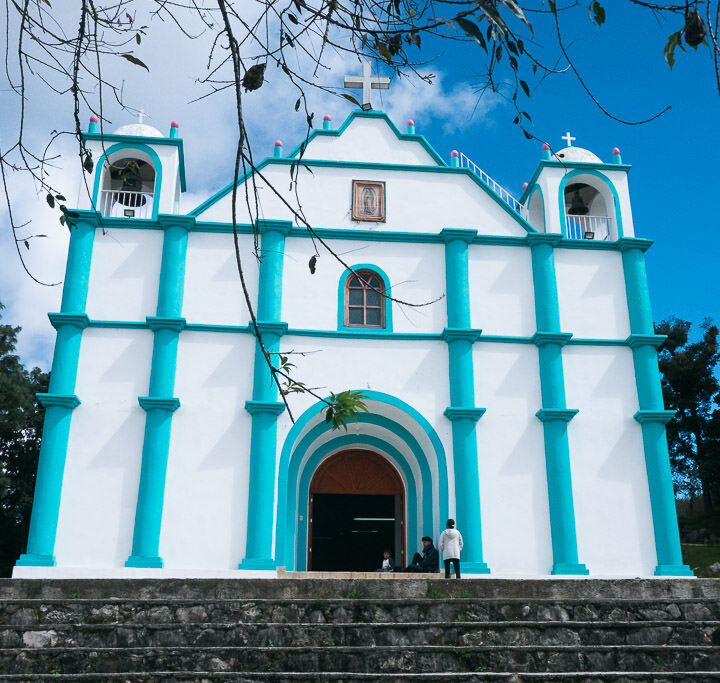
There are only two options for bike rentals in town:
- I went with Croozy Scooters which offers a range of bicycles, scooters, and motorcycles. The prices are a bit high (I paid 650 pesos per day for a 125cc scooter) though I thought the freedom to explore still made it worth it. The owner provides many tips and a hand-drawn map.
- Your other option is Viva Motos. Besides renting motorcycles (but no scooters) they also provide guided motorbike trips lasting one or more days, ranging from sightseeing around San Cris to exploring deeper into Chiapas.
I opted to spend a day driving around. I visited Montetik Park, Rancho Nuevo Park, the Arcotete caves, the orchid sanctuary, as well as the forest trail mentioned next.
See the magical orchid forests
I’m listing this right after ‘rent a motorbike’ for a reason, as ideally, you need your own transportation to get to this secret spot.
First, drive to Montetik Ecological Park. Near its southern entrance you’ll see a sign for a ‘mirador’ (viewing point) with pictures of various flowers and birds. You can check the approximate coordinates on Google Maps, though it doesn’t show any of the dirt roads here, so I recommend navigating using the Maps.me app. Drive the dirt road 2km up the mountain and you’ll reach a footpath leading to the viewing point.
The brief 20-minute hike goes through some gorgeously lush forest thoroughly covered in all manner of moss, ferns, bright red bromeliads, and blooming orchids (the latter only if you visit at the right time of year).
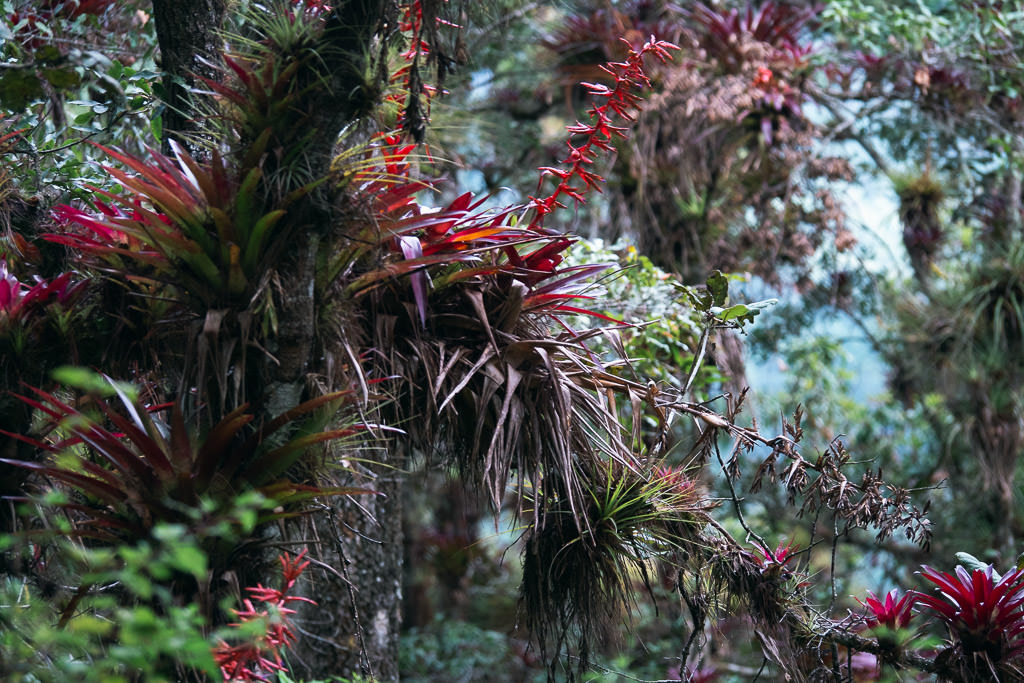
Even if you can’t find this particular spot, you may be able to find other hikes or trips where you can observe this magical ecology. This blog describes an interesting hike up Cerro Don Lauro.
Visit the orchid preserve
Another way to see a sampling of the local flora it to visit Orquideas Moxviquil. It’s on the north side of town, about a 7-minute drive from the main square (it’s a little too far to walk, so it’s better to grab a taxi if you don’t have your own transportation).
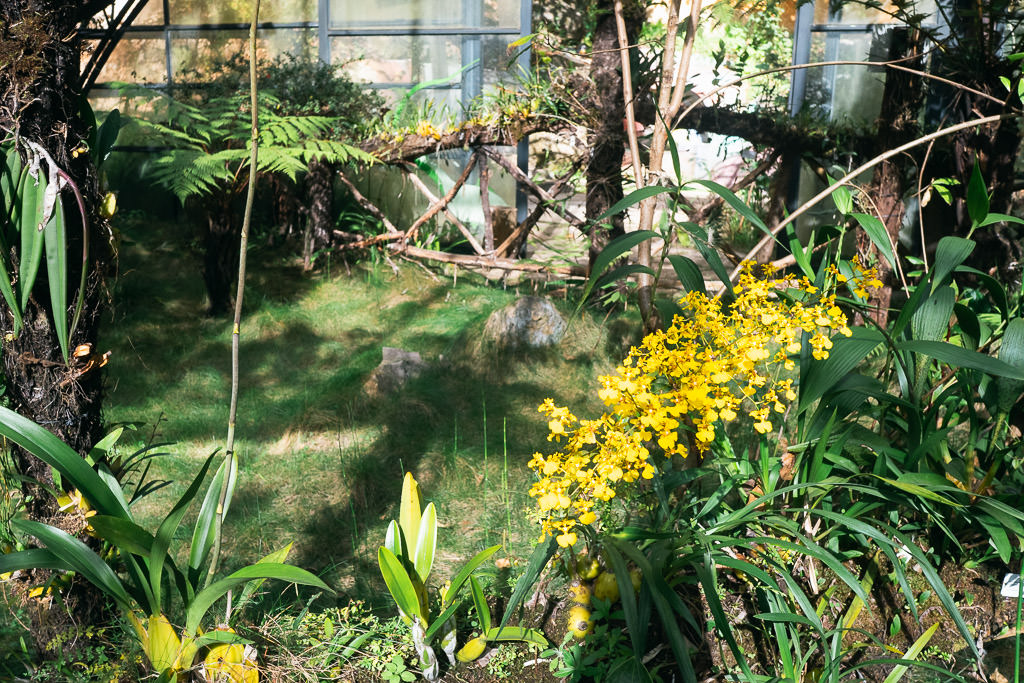
The site has several nurseries and wonderful greenhouses filled with orchids and epiphytes — plants that live on the trunks and branches of trees.
According to the staff, the best time to visit is in December when truly everything is in bloom. April-May is the second best time.
Catch some live music
Music is noticeably present in San Cris with many options to see live performances.
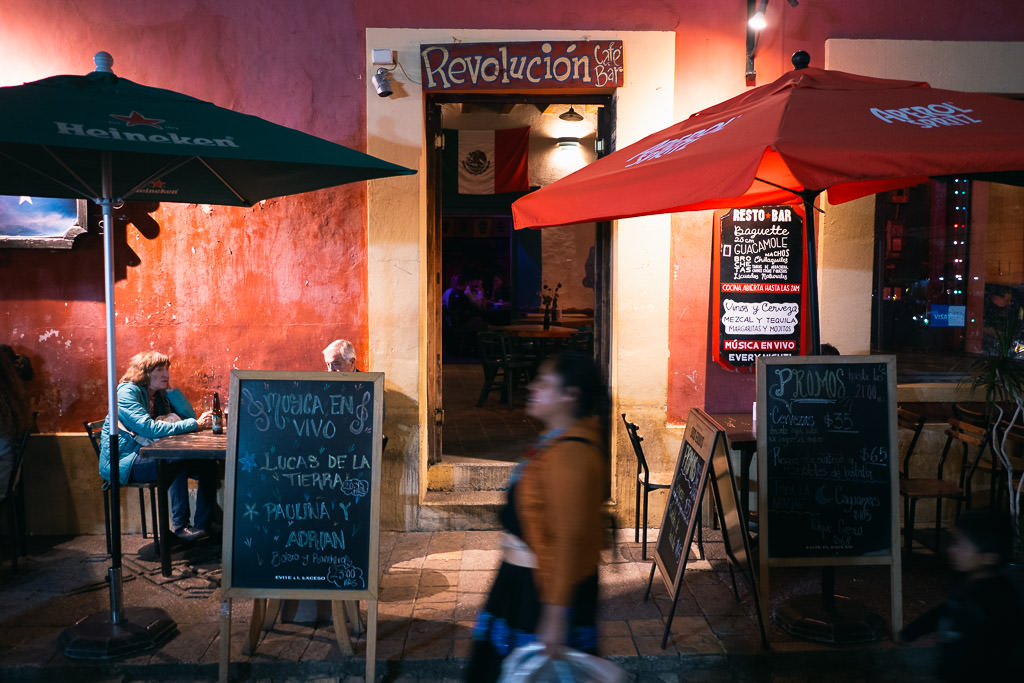
You can find live music in these places, among others:
- Revolucion Bar — a long-running institution where most nights feature bands, DJs, or open mic
- La Catrina Café Cultubar — great burgers, cheap drinks, and live music at night
- Cocoliche, a restaurant serving some fantastic Asian and Mexican dishes, often accompanied by a side dish of live jazz.
- Mayahuel — my hostel tipped it as another good bar to check out
San Cris has long attracted foreigners to settle there, in particular artists and musicians. Their influence can often be seen in the nightlife which can offer anything from reggae to salsa to techno. Whatever floats your boat, you can probably find it!
Dive into the food scene
Yeah, yeah… I know what you’re thinking, “eat the food” is such rote advice for a travel guide. But hear me out!
The restaurant scene in San Cristóbal is truly out of control in terms of both quality and value and is deserving of a special call-out.
I would even say it’s comically easy to eat extremely well in this town — perhaps more so than anywhere else in Mexico I’ve been.
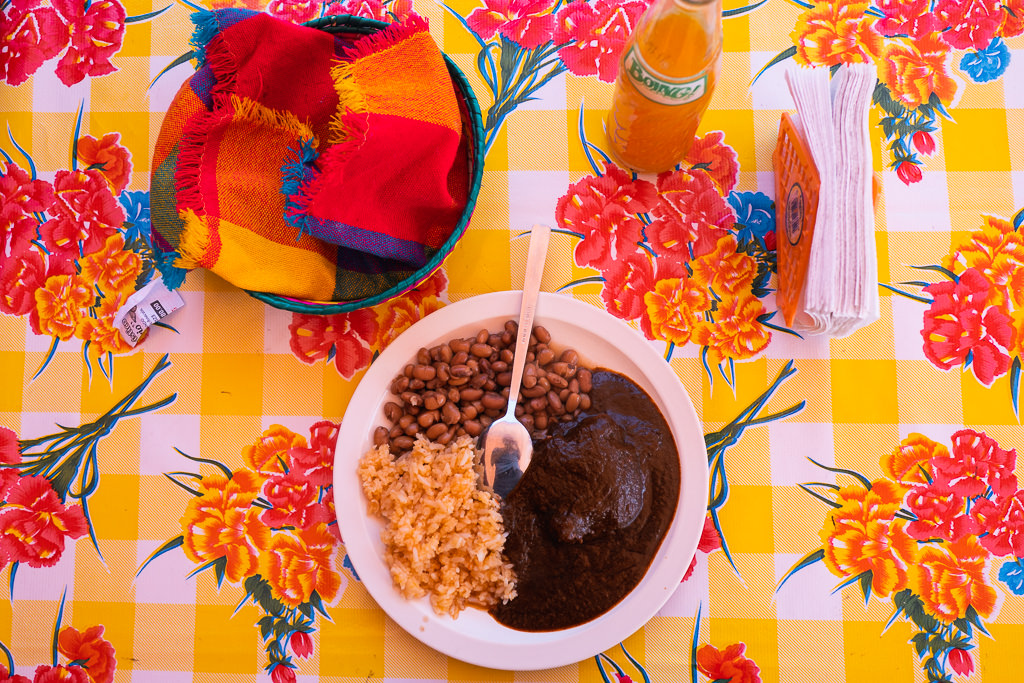
The Mexican cuisine is predictably great, though other international cuisines are also well-represented should your tastebuds tire of the local fare.
Many dishes are 100 MXN (6 USD) and under and you’ll notice a lot of care and attention to detail in the local restaurants. You can check this list of best restaurants in San Cristobal.
Local corn-based dishes here such as tamales use the indigenous chipilín herb, while there are other regional specialties such as sopa de pan, chanfaina, and putzatzé.
Climb to the two hilltop churches
On opposite ends of the downtown are two hills each with a little church on top.
Iglesia de Guadalupe (map location) is the most recognizable, with its yellow and white facade. Although there are 100 steps to climb to reach the top, it’s worth the effort for the views over San Cristóbal, particularly at sunset. It’s located just a 10-minute walk east of the main zócalo and you can see it looming at the eastern end of the main tourist street.
Iglesia de San Cristóbalito (map location) is the red-and-white church on the other hill, just west of the old center.

Swig some Pox, the ancient Mayan brew
The local spirit in these parts is called Pox (pronounced: posh), a mainly corn-based liquor that has had ceremonial uses among the Maya.
You can find Pox sold in various souvenir stores around town, but your best is to visit the local distillery Poxna, a local project that produces branded artisanal versions. Their tasting room is super cute and forms part of Jardín el Cerrillo, a creative little mini-courtyard that includes a restaurant, cafe, and some small art shops.
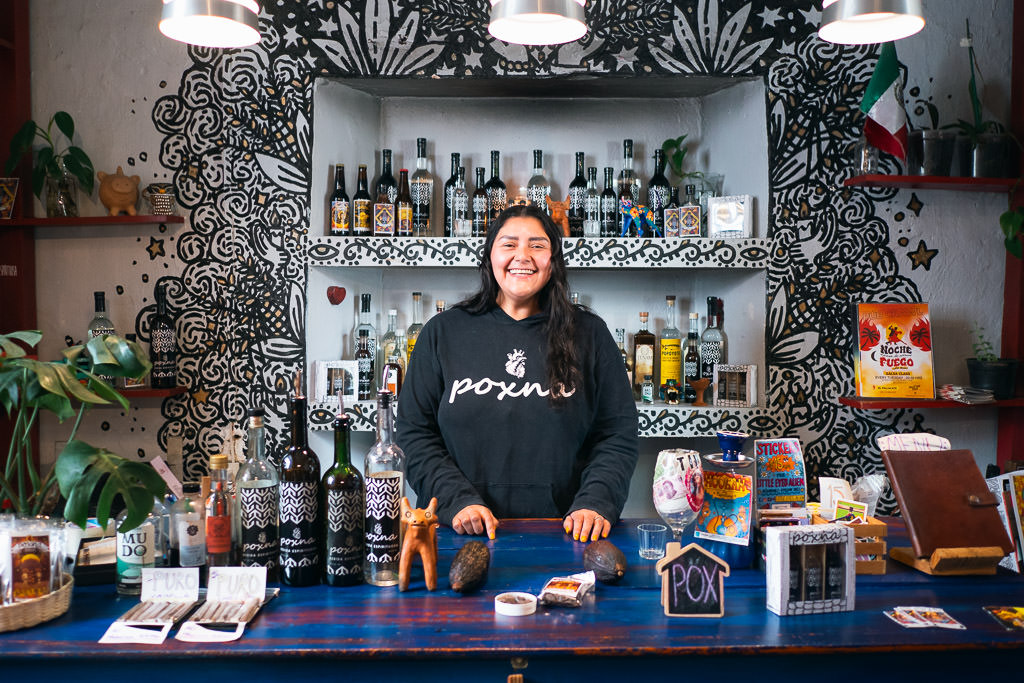
Visit the Ambar museum
Chiapas is known to be one of the world’s largest natural reservoirs of amber, with some dating as far back as 20 million years.
You can see amber jewelry sold everywhere, but you can also visit the Ambar Museum. Here we can see a collection of beautiful amber formations and appreciate just how old our Earth really is. Several samples include trapped insects and even a large beetle.
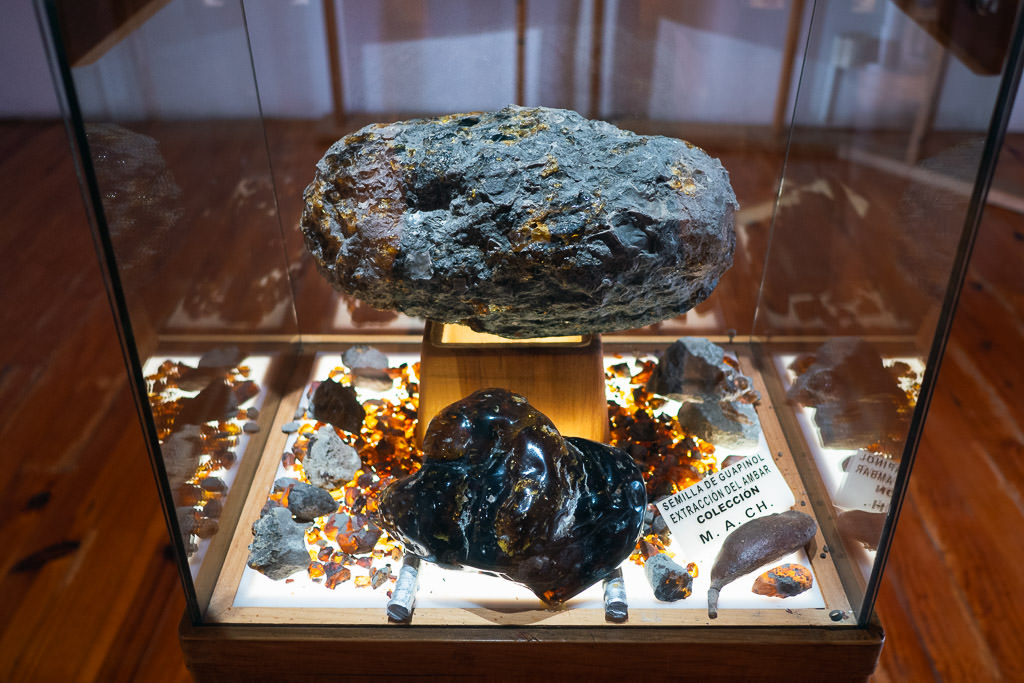
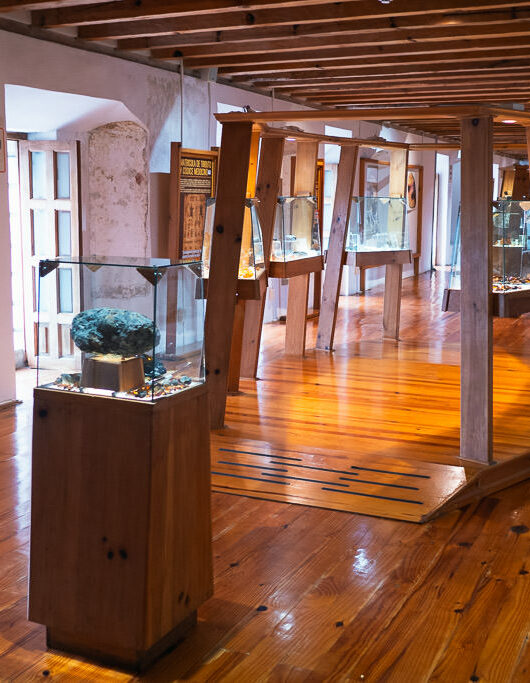
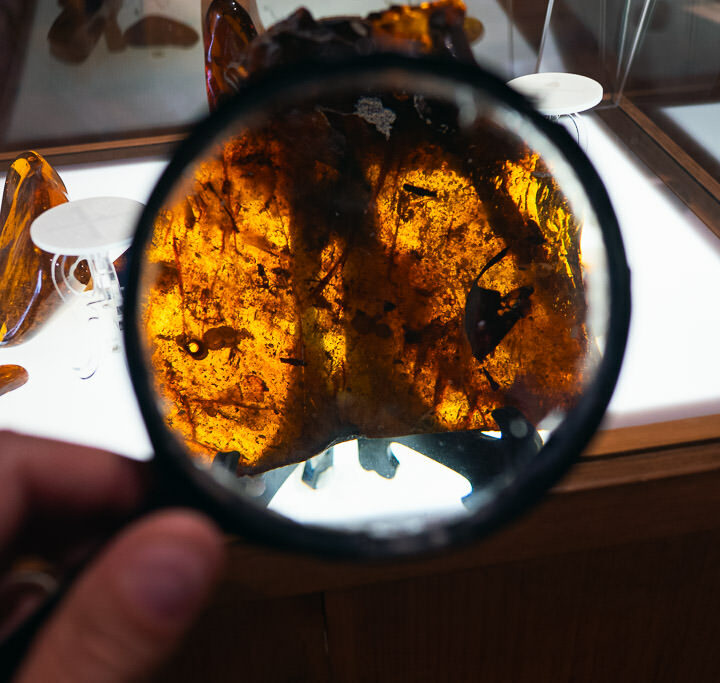
It takes one miner a week to extract just 250 grams of amber from the mine in the mountains north of San Cristobal.
Check out the Jade Museum
The Museo Mesoamericano del Jade is another worthwhile museum to visit while in San Cristóbal.
Although gold and silver were very valuable, nothing was as important to Mesoamerican tribes as jade.
This precious stone represented immortality and love, and in this museum, we can see a really impressive collection that was used during the ancient times in this region.
Visit Casa Na-Bolom (house of the jaguar)
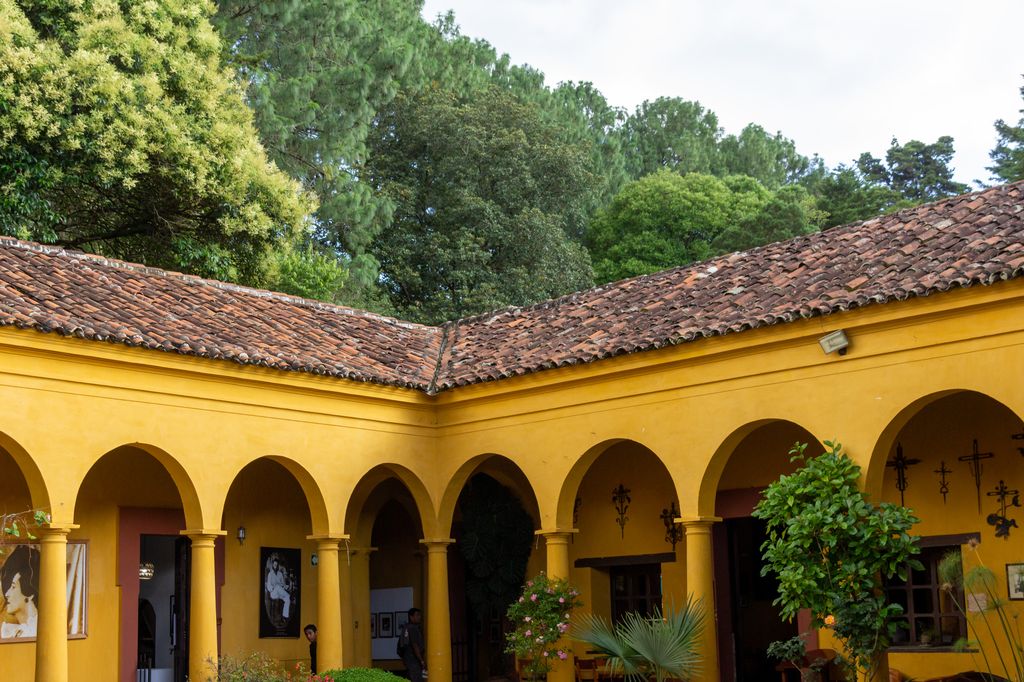
Human presence within Chiapas has dated back several thousands of years (originally as hunter-gatherers), although the Mokaya was the first organized civilization to have existed here.
From here there have been many cultures that have ruled these lands, and there’s no better place to learn about them than by heading to Casa Na-Bolom (which is a museum as well as a hotel). Here we can see how these ancient cultures lived, with a range of rare and interesting artifacts on display.
The museum has a keen focus on the Lacandon people, which is an indigenous group that still flourishes in the region, closer to the border with Guatemala.
Try the local coffee and chocolate
Chiapas is also a great place to try chocolate, with this region thought to have been one of the original birthplaces of this sweet snack.
Dating back over 4000 years ago (during the time of the Olmecs), cacao was a common snack, which they used to eat at its full, bitter strength. Chocolate was also used for spiritual purposes and even as an offering to the gods.
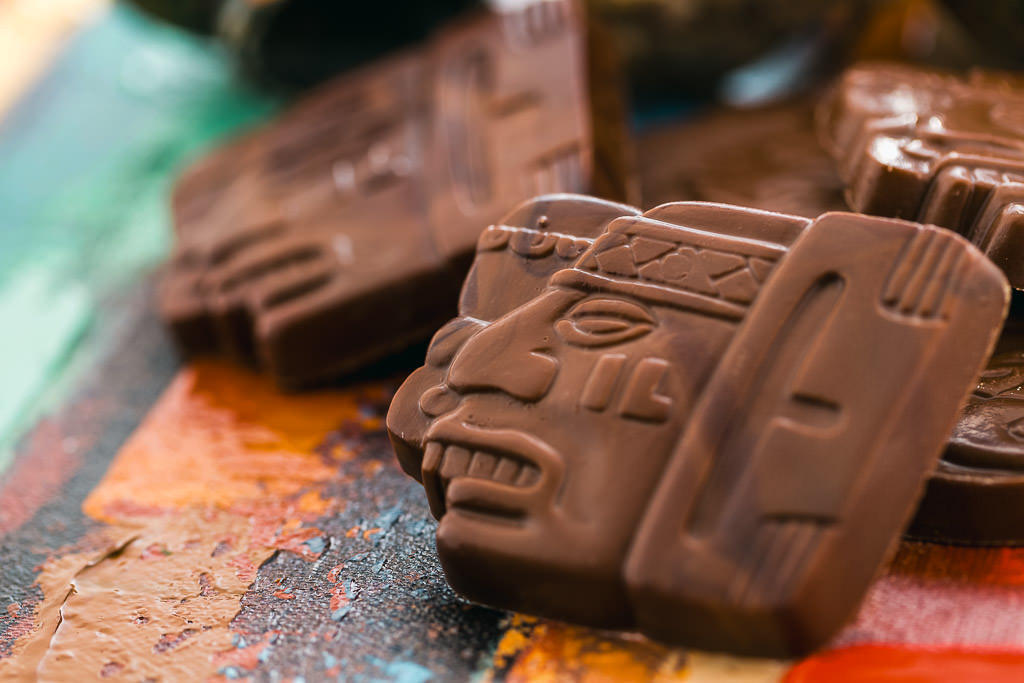
In San Cristobal, you’ll be able to try chocolate in all its many forms, but especially as a hot chocolate drink sold in many cafes.
Those who love coffee will also be in good hands here, given Chiapas has grown to become the biggest cultivator of coffee in Mexico.
You can find plenty of small cafes and restaurants near the zócalo to try one of these quality brews, including several specialty cafes serving V60 or Chemex using locally roasted beans. Check out the low-key Libre Cafe, which is also a roastery.
Browse indigenous crafts and souvenirs
With Chiapas being so rich in various traditional crafts, it’s a good place to buy souvenirs. You can find a variety of textile products, amber jewelry, art, and more.
Over 35% of the population in Chiapas is indigenous and, more often than not, specializes their craft in producing stunning textiles, garments, and ceramic pottery.
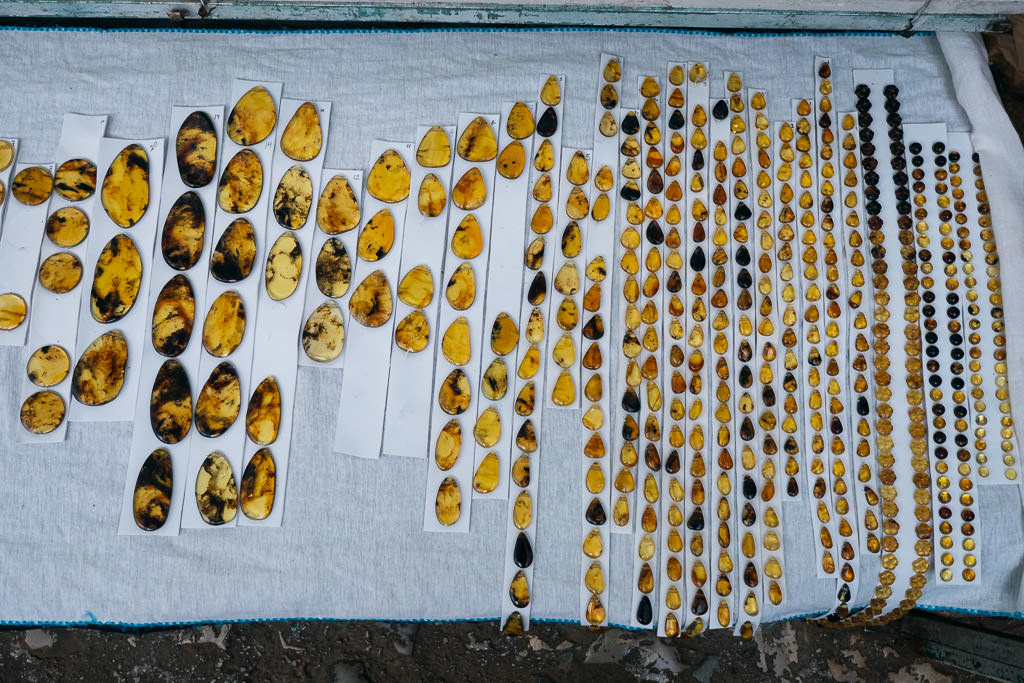
You can shop very well in these locations:
- Calle Real de Guadalupe, the main walking street, is home to many cozy boutique souvenir and gift shops.
- Mercado Principal has many souvenir stalls, including an entire section dedicated to amber
- Mercado de Dulces y Artesanias Ambar is another small market selling jewelry and baked treats.
- Tianguis Artesanal, a pop-up market is set up daily right outside the Church of Santo Domingo on the main square.
Visit Montetik or Rancho Nuevo park
Arcotete (described earlier) is the best natural park to visit overall, but these two other options are worth highlighting as well, in particular since they’re fun for families.
Montetik has a very big slide and some swings that kids will definitely love, while Rancho Nuevo has ziplines, horse rides, and a cave that’s made more accessible thanks to a spacious walkway.
While Arcotete feels more like an ecotourism park where you’re fully in nature, here you’ll find a large BBQ and picnic area with various forms of entertainment around it, which can make for a fun afternoon out.
Even adults can enjoy the cave in Rancho Nuevo, which has a straight path for the first few hundred meters, followed by a more natural section that you can enter with helmets and flashlights (for a small extra fee).
Where to go next
San Cristóbal is the most popular base for tourists in the state of Chiapas, but there are several other great destinations to add to your list.
Palenque
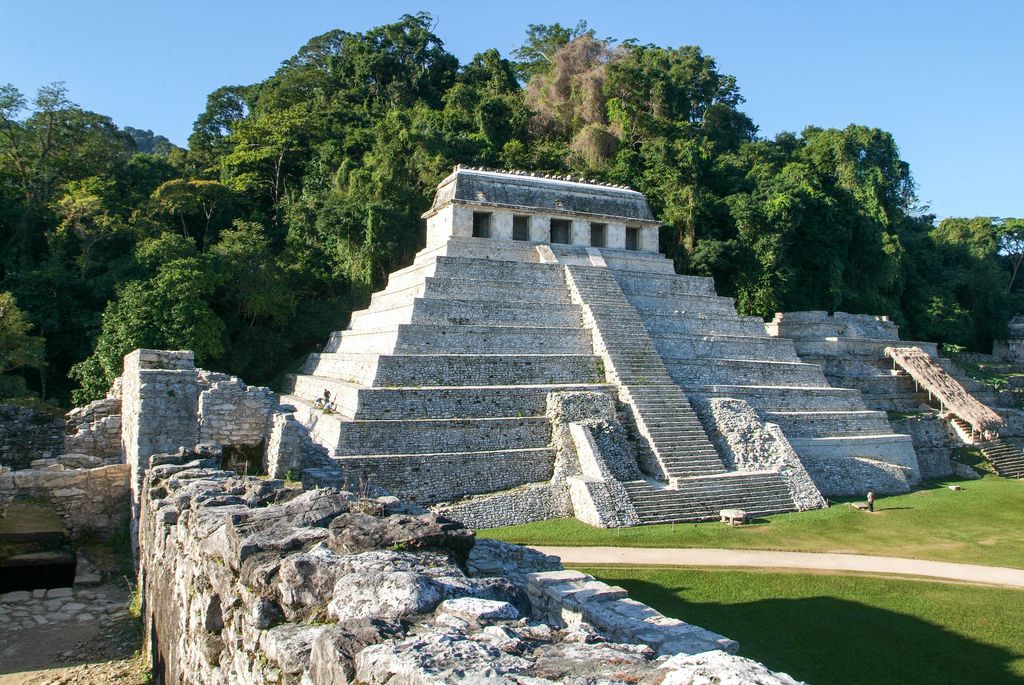
Located roughly 110 km east of San Cristóbal, this town in the tropical lowlands of Chiapas is a must-visit.
The Mayan ruins of Palenque are some of the most memorable you can visit in Mexico. Being in the middle of the jungle, you can sometimes hear howler monkeys and spider monkeys, or see toucans flying around.
Usually, Palenque is a major stop of its own rather than a day trip. It’s better this way for those who are independent and have more time (public buses between the two can take as long as 9 hours one-way).
However, those who are short on time can join this day trip, where you’ll visit the ruins as well as other gems such as the Agua Azul Waterfalls along the way.
Comitán
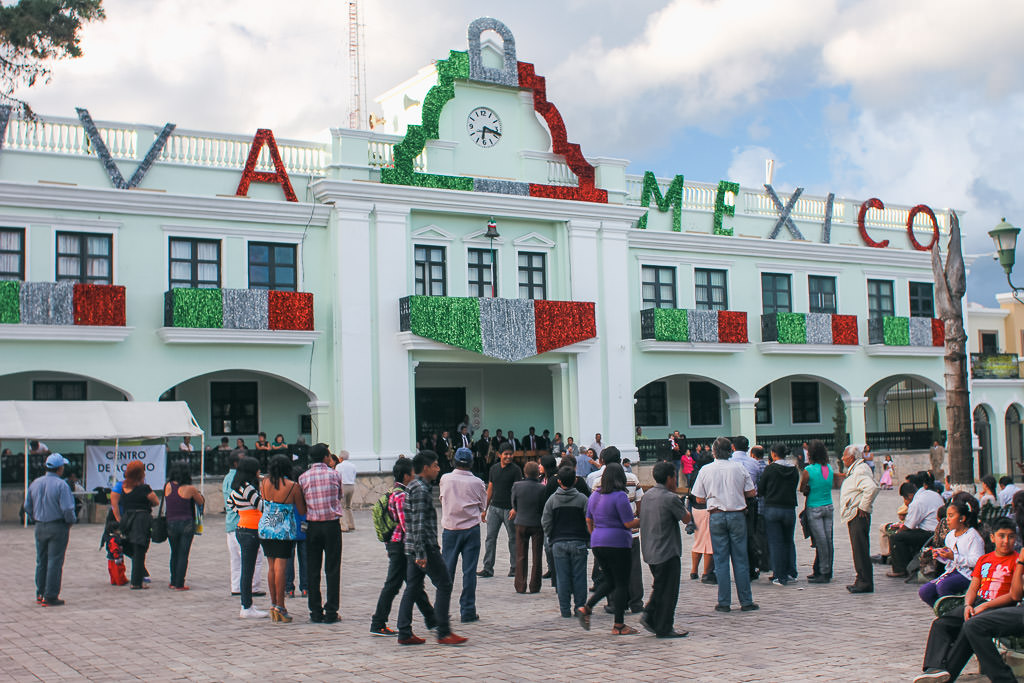
This town 2 hours southeast of San Cristóbal is a little off the tourist radar, but has plenty of charm to warrant a day trip or overnight stay.
It has a beautiful main square, colonial-era architecture, small museums, and some viewpoints. Most of all it’s a great springboard into the more remote corners of Chiapas, including the El Chiflón waterfalls and Las Nubes ecotourism area.
I once happened to be there during the Día de la Independencia when the squares were full of musicians, people dancing, and other festivities, but normally the place is pleasant but fairly low-key.
Agua Azul waterfalls
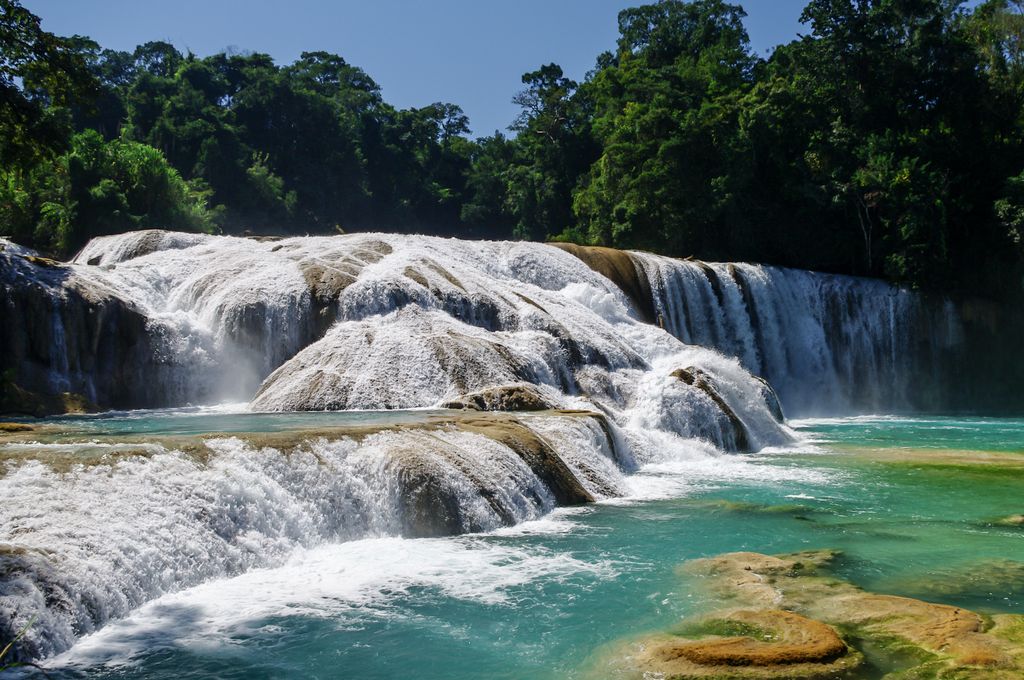
This series of bright-blue cascades has to be seen to be believed. While travel photos can sometimes be deceiving with lots of post-processing, these waterfalls truly are this mesmerizing color, which is due to an abundance of rich minerals found in the river.
The distance between San Cristóbal and Agua Azul is just over 150 km, which takes around 3 hours to drive to.
However if you do opt for public transport to get here, it can take almost half a day given unreliable schedules and multiple bus stops.
The better way to do it is to head with this day tour from San Cristóbal, which includes transport in an air-conditioned minivan as well as having all entrance fees included. You’ll also visit Palenque and the waterfalls of Misol-Ha.
However, if time allows in your travel schedule, it’s best to stay in Palenque and visit these waterfalls from there.
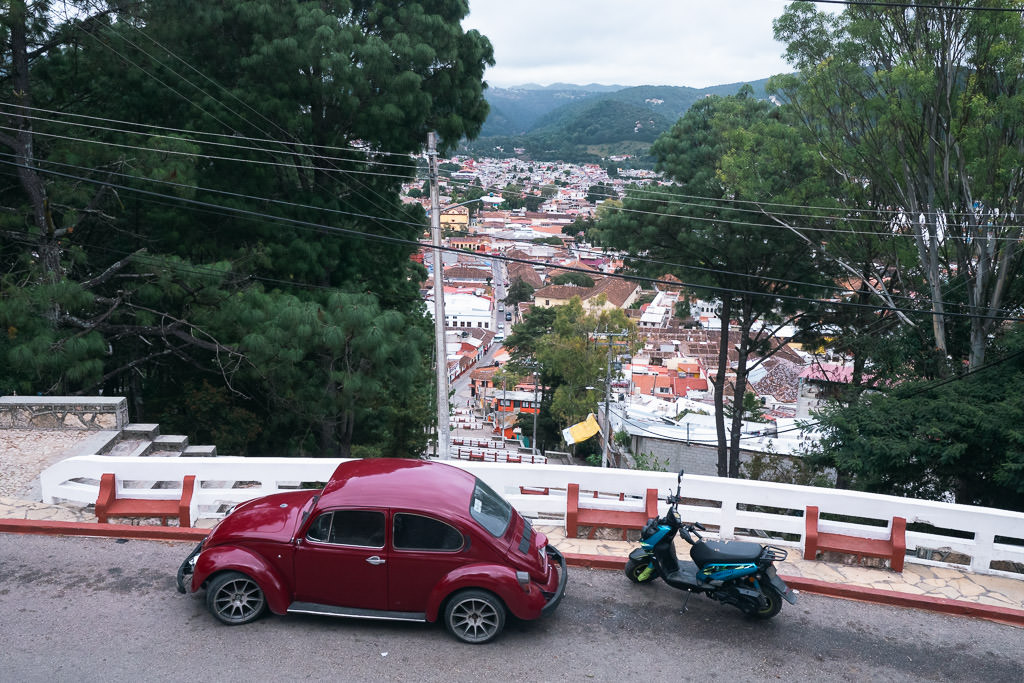
Getting to San Cristóbal
By Air: The nearest airport is in Tuxtla, which is about one hour from San Cristóbal. There are 4 daily bus services by OCC direct from the airport to San Cristóbal, as well as numerous airport shuttle services by local companies (these run almost hourly).
From Palenque: The road between Palenque and San Cristobal has seen a number incidents in years past, including some robberies. This is why the coach buses by OCC or ADO still go the long way round via Villahermosa — a journey taking around 9 to 10 hours.
It seems like security is no longer a major concern as I write this in January 2024, but I advise inquiring locally to be sure. Local minivan services still take the more direct route which takes about 5 hours. You’ll be going through Zapatista territory and they sometimes stop vehicles to demand a small donation (e.g. around a dollar or so).
There are tour companies that make stops at Misol-Ha and Agua Azul waterfalls on the way between San Cristóbal and Palenque, which can be a more efficient way to tackle these sights.
From Oaxaca: San Cristóbal is the next stop after Oaxaca on the classic Mexico backpacker trail. The bad news is the coach buses from Oaxaca City take around 12 hours (two hours more if coming from Puerto Escondido). The good news is you can travel this section overnight, saving time and the cost of a night’s accommodation. There aren’t any particularly noteworthy places along the way that would let you easily break up this journey, so this is just one where you have to bite the bullet.
Some links may be affiliate links, meaning I may earn commission from products or services I recommend. For more, see site policies.
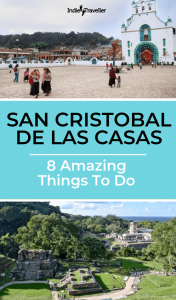
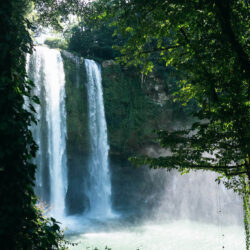
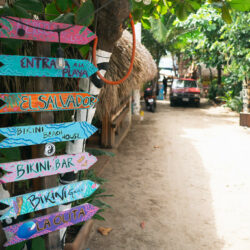
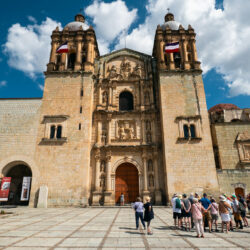




0 comments
Leave a comment
Your email address will not be published. Comments are manually moderated.